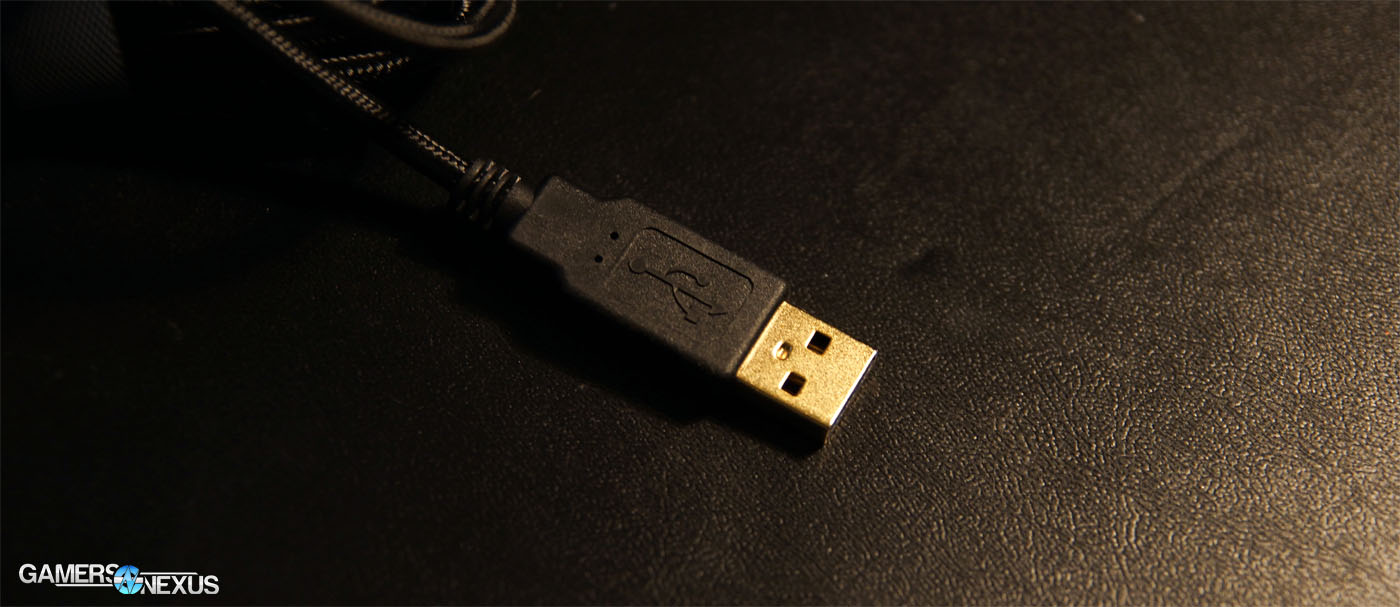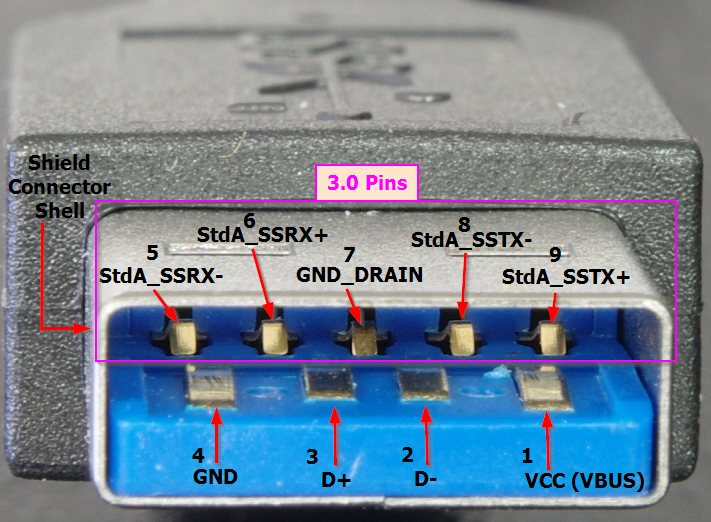Gold-Plated USB Connectors are Marketing Myths - There is No Advantage
Posted on
Marketing speak comes in fad-like waves of bombastic claims that are often not founded in reality (or are yet untested in reality).
When it comes to gold-plated USB cables – something we've griped about in the past – that's exactly what they are: Marketing speak. The advertised advantages are generally stated in the form of “reduced latency” or “improved signal quality” (direct quotes from marketing materials), often citing greater conductivity of gold as the catalyst for these claims.
There are two main types of gold-plated USB cables that we're talking about here:
- Gold-plating only on the housing (exterior shell) of the header, a component that carries no signal.
- Gold-plating on both the pins and the housing.
Are Gold-Plated USB Cables Worth It?
In the case of the first type of cable, the inaccuracy of “reduced latency” or “improved signal” claims is almost insulting. A USB cable's housing serves one purpose: Protect the pins and keep the connector intact. It carries no electrical signal. In fact, you could remove the header completely and still use the USB device or cable. Because the housing carries no electrical signal (only the pins do that), it is an electrical impossibility that the housing would somehow improve signal strength or “reduce latency.”
It could theoretically be touted that gold-plated housing would decrease potential for oxidation or galvanic corrosion at the header, but for USB cables, these occur so rarely that they become non-issues. If you were to leave your keyboard connected for several years in an unmaintained environment, corrosion could potentially become a concern – but then you'd want the plating on a lot more than just the housing; you'd want the plating on the housing, the pins on the input, the pins on the receiving connector, and just about every other interconnect.
And that brings us to the second type of cable.
Even with gold-plated pins, the receiving end is almost guaranteed to be a non-gold metal (aluminum, nickel-plated, etc.) and will therefore not complete like-to-like pin contact. As long as we're speaking in largely untestable theories, this could theoretically be worse for the metals comprising the pins than like-to-like all aluminum contact.
More importantly, a USB device neither outputs the polling rate nor hosts the number of contacts to require the level of accuracy that improved conductivity from gold pins would provide. A USB signal will simply not utilize gold pins. Look to a CPU or RAM for examples: CPUs operate at several gigahertz and host thousands of pins (gold-to-gold pins and contacts), whereas a keyboard will – at best – operate at maybe 1000Hz. RAM hosts hundreds of pins and operates at high frequencies and voltages, something that a USB device won't do.
There is something to be said for gold-plated audio cables, but that's almost entirely because a gold-plated audio cable will often be coupled with thicker, higher-quality components to begin with. The improved performance is a direct result of greater cable quality; the gold plating just happens to be there. If you were dealing with pro-audio equipment that's going to be abused or left sitting for long periods of time, gold-plated contacts and headers could reduce oxidation and make life easier – but that's far, far away from what our website covers.
The short of it is this: If a product comes with a gold-plated USB connector anyway, fine – you can't do much about that. Just know that it won't be faster, even if the manufacturer advertises as such. If purchasing a USB cable and comparing gold-plated vs. “normal” options, just opt for the non-gold unit. It'll be a bit cheaper and will perform identically.
- Steve “Lelldorianx” Burke.

